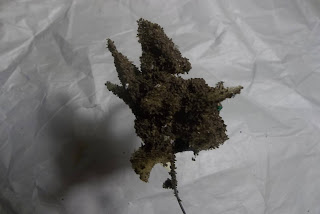Action was joined between the defending Royal Navy and the German composite squadrons off the Humber estuary this afternoon. Due to severely annoying technical difficulties I'll post the AAR in two installments.
The German light cruiser squadron commodore aboard SMS Endine peered through the binoculars at the oncoming British and assessed his options. The temptation to turn to starboard to meet them was strong, but he saw it wouldn't be wise. For one, it would separate him from his battleship charges. For another a starboard turn by his British counterparts would enable them to cross his T. Instead he continued on course and summoned the other two ships of his squadron, Gazelle and Frauenlob, from their station to the south, directing them to thread through the battleship divisions and join him.
The light cruisers opened fire at 12,000 yards range, with HMS Intrepid and Naiad concentrating their fire upon SMS Endine, and HMS Apollo and Andromache focusing on SMS Nymphe. Endine returned fire at Intrepid, and Nymphe at Andromache. The 6-inch guns of the aging British protected cruisers soon made their mark on the leading German cruiser.
The armoured cruisers HMS Sutlej and Bacchante headed by four destroyers maneuvered to the west of the British cruiser screen, aiming to head off the advancing German armoured cruisers before they could reach the estuary. To the south of the German formation the battleships had to make a slight course correction to allow the cruisers to pass through. Ahead of them the armoured cruisers Roon and Yorck accelerated to maximum speed in an attempt to pass the oncoming British and reach the Humber.
The light cruiser action grew heated as the British squadron turned on a parallel course to their German counterparts, closing the range to 8,000 yards. Both SMS Endine and HMS Intrepid heading their respective columns began to suffer under the onslaught.
As the range closed further the action became general. HMS Intrepid staggered out of the line and steered away from the conflict. Her ship's company were cheered to see the oncoming might of the battleship squadron. Across the water SMS Endine also fell out of line, the 6 inch shells having severely battered her hull. SMS Nymphe took the lead and became the focus of the British cruisers' fire.
Fierce defensive fire from both sides virtually obliterated the destroyer and torpedo boat flotillas. Two British destroyers succeeded in launching their torpedoes at the German armoured cruisers before succumbing, but both shots missed. Two other destroyers survived the bloodbath only to find themselves between a rock and a hard place. The British cruiser squadron also found themselves where cruisers had no right to be - between the armoured behemoths of the rival fleets. Their situation became starkly clear as the armoured cruisers HMS Sutlej and Bacchante began to fire upon Roon and Yorck and the air filled with the express train-like rumble of passing 9.2 inch shells.
Seeing the British battleship squadron looming up ahead the German light cruiser commodore ordered a gefechtskertwendung (battle turn-away). The squadron flagship SMS Endine, unable to comply due to severe battle damage, made her own way, turning eastwards away from the British battleships.
To the southeast, Yorck's captain couldn't resist the easy target that came under his guns. HMS Naiad paid the price for boldness as three 8.2 inch shells shredded her hull, sending her to the bottom within seconds.
 |
| The end of Naiad. |
However, German triumph proved short-lived. HMS Spiteful, one of the two surviving destroyers, managed to slip through the smoke and fumes of combat unseen to close with the German battleship squadron and fire her torpedo at SMS Kaiser Barbarossa. The battleship responded with a full barrage from her 5.9 inch secondary guns, obliterating Spiteful in an instant, but it was too late. With less than 4,000 yards to go the torpedo ran fast and true, finding its mark on the Barbarossa's starboard quarter. It detonated with a tremendous roar, sending a spreading plume of dirty black water soaring hundreds of feet in the air. The massive ship shuddered and lurched sideways as the blast wiped out her forward secondary guns. Her speed dropped immediately to twelve knots. Only the excellent German watertight partitioning system saved Barbarossa from worse flooding.
 |
| Kaiser Barbarossa takes a solid torpedo hit even as her tormentor is destroyed. |
The cruiser squadron disposed of Spiteful's sister ship, HMS Syren, before she could fire her torpedo. Even this minor victory soured as the roar of six inch guns to the north announced the British battleships were coming into action. HMS Magnificent's secondary battery had come to bear on the badly damaged SMS Endine. The aim was true and the wounded flagship disappeared in a hail of shellfire, taking the commodore with her.
The German Admiral Commanding aboard the flagship SMS Weissenburg remained outwardly stoic in the face of developments, but inwardly he cringed. It now seemed obvious that British naval intelligence had given the Home Fleet sufficient warning to scupper his plans. The aim of getting at least the armoured cruisers into the Humber estuary to wreak havoc on shipping and - time permitting - shore facilities no longer looked possible. A swift revision of his assets brought up a new idea.
If his armoured cruisers and battleships could damage or destroy the surviving British cruisers the Home Fleet would no longer have vessels to hand fast enough to keep up with his light cruisers. He could order them to conduct a fast raid on the Humber and its shipping, or perhaps a swift guerre de course along England's East Coast. He himself could order a gefechtskertwendung, so directing the squadron home, hopefully fending off the British Home Fleet's attacks as he progressed...






